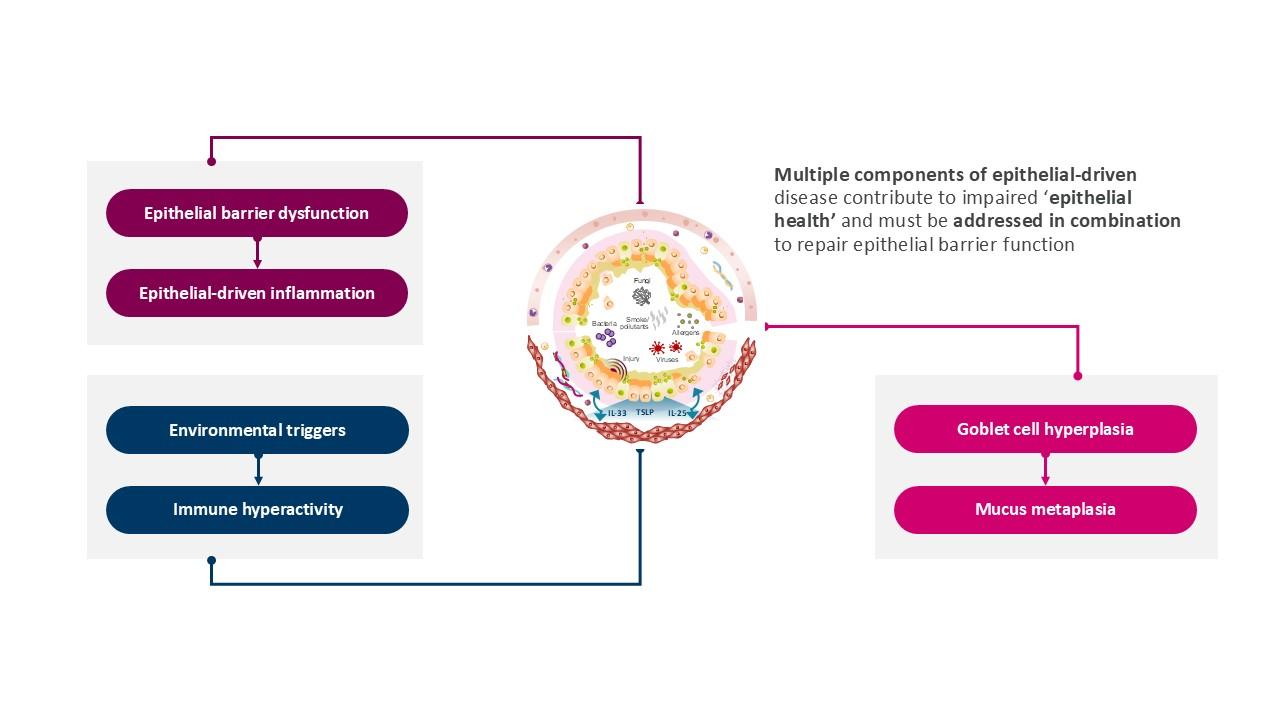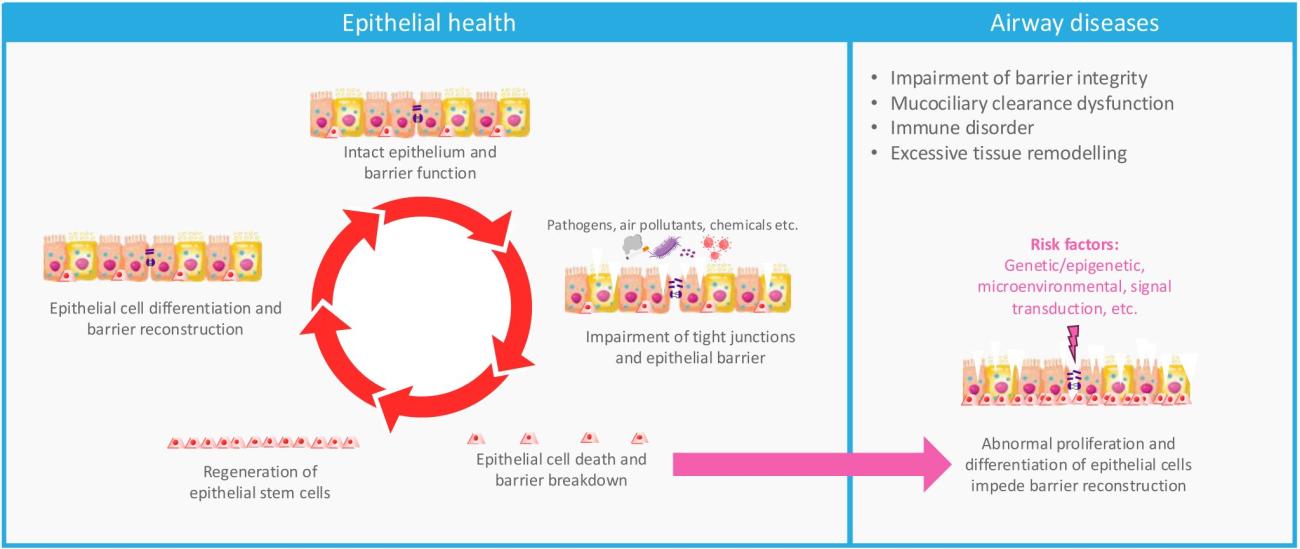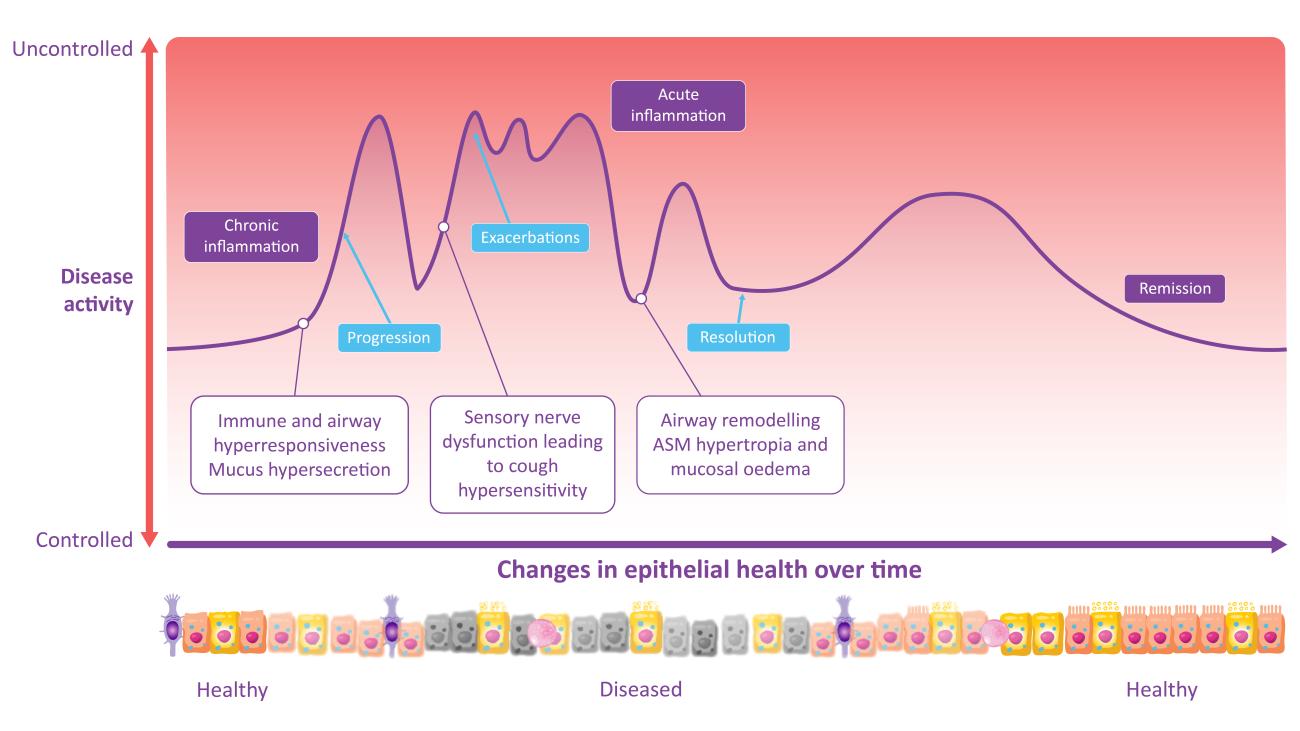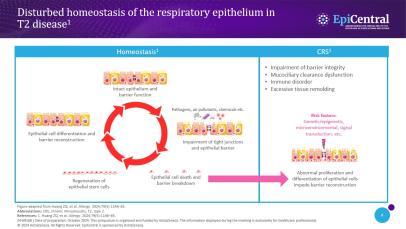References
1. Pelaia C, et al. J Clin Med. 2023;12(10):3371; 2. Maspero J, et al. ERJ Open Res. 2022;8(3):00576-2021; 3. Thomas D, et al. Eur Respir J. 2022;60(5):2102583; 4. Holgate ST. Allergol Int. 2008;57(1):1-10; 5. Hellings PW, Steelant B. J Allergy Clin Immunol. 2020;145(6):1499-509; 6. Chabra R, Gupta M. Treasure Island (FL): StatPearls Publishing; 2025. Available from: https://www.ncbi.nlm.nih.gov/books/NBK526018/ (Accessed 1 May 2025); 7. Russell RJ, et al. Eur Respir J. 2024;63(4):2301397; 8. Murphy RC, et al. J Allergy Clin Immunol Pract. 2021;9(7):2588-97; 9. Crompton G. Prim Care Respir J. 2006;15(6):326-31; 10. Tanaka A. J Gen Fam Med. 2015;16(3):158-69; 11. Pavord ID, et al. Lancet. 1999;353(9171):2213-4; 12. Hellings PW, et al. Allergy. 2024;79(5):1123-33; 13. Perez-de-Llano L, et al. Am J Respir Crit Care Med. 2024;210(7):869-80; 14. Caminati M, et al. Curr Allergy Asthma Rep. 2024;24(1):11-23; 15. Nannini LJ. J Asthma. 2020;57(6):687-90; 16. Menzies-Gow A, et al. J Allergy Clin Immunol. 2020;145(3):757-65; 17. Fokkens WJ, et al. Rhinology. 2024;62(3):287-98; 18. Lommatzsch M. Curr Opin Pulm Med. 2024;30(3):325-9; 19. Scadding GK, et al. Front Allergy. 2025;5:1531788; 20. Chan Y, et al. J Otolaryngol Head Neck Surg. 2023;52(1):50; 21. Heldin J, et al. J Asthma Allergy. 2022;15:1569-78; 22. Gon Y, Hashimoto S. Allergol Int. 2018;67(1):12-7; 23. Greenberg S, et al. J Allergy Clin Immunol. 2012;130(5):1071-7.e10; 24. Smith NMJ, et al. BMJ Open Respir Res. 2020;7(1); 25. Brightling CE, et al. Eur Respir Rev. 2024;33(174):240221; 26. Reynolds SD, et al. Proc Am Thorac Soc. 2012;9(2):27-37; 27. Inoue H, et al. J Clin Med. 2020;9(11); 28. Tam A, et al. Ther Adv Respir Dis. 2011;5(4):255-73; 29. Hewitt RJ, Lloyd CM. Nat Rev Immunol. 2021;21(6):347-62; 30. Kohanski MA, et al. J Allergy Clin Immunol. 2021;148(5):1161-4; 31. Kato A, et al. J Allergy Clin Immunol. 2022;149(5):1491-503; 32. Raby KL, et al. Front Immunol. 2023;14:1201658; 33. Porsbjerg C, et al. Lancet. 2023;401(10379):858-73; 34. Asthma CoEiS. 2018. Available from: https://toolkit.severeasthma.org.au/severe-asthma/pathophysiology/ (Accessed 1 May 2025); 35. Heijink IH, et al. Allergy. 2020;75(8):1902-17; 36. Davies DE. Proc Am Thorac Soc. 2009;6(8):678-82; 37. Gauvreau GM, et al. Expert Opin Ther Targets. 2020;24(8):777-92; 38. Bonser LR, Erle DJ. J Clin Med. 2017;6(12):112; 39. Çolak Y, et al. Thorax. 2024;79(4):349-58; 40. Soremekun S, et al. Thorax. 2023;78(7):643-52; 41. Kanemitsu Y, et al. Allergol Int. 2014;63(2):181-8; 42. Wang M, et al. Clin Transl Allergy. 2020;10:26; 43. Bilodeau L, et al. Rhinology. 2010;48(4):420-5; 44. Federico MJ, et al. J Allergy Clin Immunol. 2007;119(1):50-6; 45. Bai TR, et al. Eur Respir J. 2007;30(3):452-6; 46. Harmsen L, et al. Respir Med. 2014;108(5):752-7; 47. Guo Z, et al. J Asthma. 2014;51(8):863-9; 48. Kaur D, et al. Allergy. 2015;70(5):556-67; 49. Xu X, et al. Exp Biol Med (Maywood). 2019;244(9):770-80; 50. Huang ZQ, et al. Allergy. 2024;79(5):1146-65; 51. Fehrenbach H, et al. Cell Tissue Res. 2017;367(3):551-69; 52. Georas SN, Rezaee F. J Allergy Clin Immunol. 2014;134(3):509-20; 53. López-Posadas R, et al. Front Cell Dev Biol. 2024;12:1258859; 54. Tilley AE, et al. Annu Rev Physiol. 2015;77:379-406; 55. Kempeneers C, et al. ERJ Open Res. 2023;9(5):00220-2023; 56. Huang Y, Qiu C. Ann Transl Med. 2022;10(18):1023; 57. Varricchi G, et al. Eur Respir J. 2024;63(4):2301619; 58. Ha JG, Cho HJ. Int J Mol Sci. 2023;24(18):14229; 59. Sun Z, et al. Front Immunol. 2020;11:1598; 60. Noureddine N, et al. J Asthma Allergy. 2022;15:487-504; 61. Ghezzi M, et al. Children (Basel). 2021;8(12):1167; 62. Carpaij OA, et al. Pharmacol Ther. 2019;201:8-24; 63. Chapman DG, Irvin CG. Clin Exp Allergy. 2015;45(4):706-19; 64. AlBloushi S, Al-Ahmad M. Front Immunol. 2024;15:1285598; 65. Jesenak M, et al. Chest. 2024; 66. Cohn L. J Allergy Clin Immunol. 2022;150(1):59-61; 67. Porsbjerg C, et al. Remission and response in asthma and chronic obstructive pulmonary disease [Symposium: Session ID 271]. ERS, 7–11 September 2024, Vienna, Austria; 68. Al Ghobain MO, et al. Cureus. 2023;15(2):e35289; 69. Volbeda F, et al. Thorax. 2013;68(1):19-24; 70. O'Byrne P, et al. Eur Respir J. 2019;54(1):1900491; 71. Mailhot-Larouche S, et al. Ann Allergy Asthma Immunol. 2024;S1081-1206(24):01559-X; 72. Busse WW, et al. J Allergy Clin Immunol Pract. 2024;12(4):894-903; 73. Wisnivesky J, et al. J Asthma. 2023;60(6):1072-9; 74. Price D, et al. Eur Respir Rev. 2020;29(155):190151.






